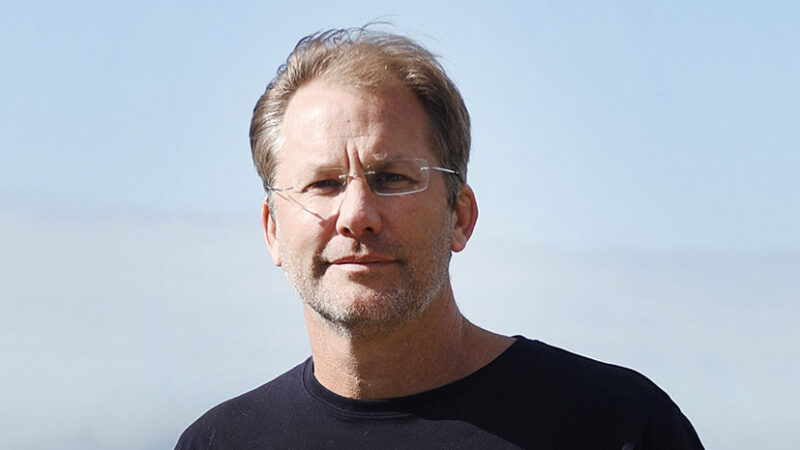 If you’re looking for genuine transformation, you need look no further than your fear. For in it there exists not only an abundance of trapped energy, but also the very testing and challenge that we need in order to live a deeper, more authentic life.
If you’re looking for genuine transformation, you need look no further than your fear. For in it there exists not only an abundance of trapped energy, but also the very testing and challenge that we need in order to live a deeper, more authentic life.
The dragon’s cave awaits. However shadowed it may be, you know where it is, and you can see it more clearly as you move toward it, step by conscious step, bringing the fearful you into your heart, with your adrenaline not so much fueling your fear as your courage and investigative excitement.
The following guide can help you confront the dragons of fear as you navigate through your own unique shadow.
Get to know your fear. Study it, approach it, become more curious about it, turn on the lights. Get to know it even better. Go for an inside look at it, paying close attention to all of its qualities, static and otherwise. The more familiar you are with your fear, the less the chances are of you letting it control you.
Get to know its roots. The expression of your fear might be outside your shadow, but its origins, its foundational roots, may be in your shadow. You may, for example, begin with an obvious case of worrying and then drop below that to an anxiety that has been with you since you were young. Underlying that may be a survival-based panic that’s anchored in an even earlier time. Spelunk your depths.
Stop shaming yourself for being afraid. Everyone has fear, whether they admit it or not. The Dalai Lama has said he sometimes feels anxious. The more we shame ourselves—and are shamed—for being afraid, the more our fear will be driven into our shadow. Fear is natural, but what we do with it may not be so natural, such as when we pathologize it.
Open your heart to the frightened child in you. Develop as much compassion as possible for the fearful you. (This compassion comes from the you who is not caught in fear.) Don’t tell that child not to be afraid or that there’s nothing to be afraid of. Instead, be caring and protective enough to hold such fearfulness the same way you would a trembling infant. Remember that as a child you needed not just love but also protection. Being a good parent to your inner child will decentralize your fear so that instead of it holding you, you are holding it.
Instead of giving your fear higher walls, give it bigger pastures. Doing so expands you. This makes more room for your fear to shed some of its constrictedness and transition into excitement, allowing you more access to contexts other than that of fearfulness. Fear contracts our breathing, squeezing and gripping us, as if we’re stuck in a too-small enclosure, unpleasantly walled in. Giving our fear more room, more space, doesn’t make it worse but rather spreads out its energies, diluting its intensity and reducing the pressure.
Think of your fear as excitement in disguise. Where there’s fear, there’s excitement close by. Make a hard fist, tightly balled up, and imagine this is your fear. Then relax your hand, letting your fingers spread wide; this is your excitement, open and available. It’s the same energy, the same adrenaline, but the context has shifted dramatically. You weren’t trying to get excited; simply relaxing your fist freed up your energy. The fear initially is tightly held in the shadows; making conscious contact with it allows it to begin uncurling, to let some light in.
Keep your anger on tap. Take advantage of the fact that fear and anger are very closely related, being basically the same biochemically. Where fear contracts us, anger expands us, for better or worse. In fear we either tend to flee or freeze; we often feel paralyzed. But in anger we thrust forward, leaning into what angers us; our energies mobilize for taking strong stands. Some anger is a mask for fear, but plenty of anger is fearless fire, flaming through relational deadwood and obstacles to well-being, providing a torch that can illuminate even the darkest corners of our shadow.
Separate the content of your fear from its energy. When fear gets into our mind, we spin out storylines that can keep us in dark places internally, thought-cages packed with fearful ideas and expectations. When this happens, don’t think about your fear. Instead, bring your awareness as fully as possible to your body. Sense where in your body the energy of fear is strongest, taking note of the sensations there and their detailing. Stay with this body awareness, sensing instead of thinking, until you feel more stability. Soften your belly and chest, feeling how your breathing moves your entire torso, keeping some awareness on the arrival and departure of each breath.
Practice courage. Courage doesn’t mean we’re fearless but that we’re going ahead regardless of whatever fear we’re feeling. Start with small acts of courage, doing things that are a bit scary, a bit daunting. This could mean having a cold shower when you’re feeling overly sluggish, or saying no to a lunch date with a friend who you know you’ll find draining to be around today. Honor your everyday courage; sometimes getting out of bed asks more from us than does parachuting from a plane.
As you practice courage, more and more of your fearfulness will shift into resolve and action. Some of it may remain, keeping you on your toes. And some of it may morph into the kind of anger that helps fuel needed stands. Remember that practicing courage helps immensely in facing and entering your shadow.
Excerpted from Bringing Your Shadow Out of the Dark: Breaking Free from the Hidden Forces That Drive You by Robert Augustus Masters.

 Robert Augustus Masters, PhD, is an integral psychotherapist, relationship expert, and spiritual teacher whose work blends the psychological and physical with the spiritual, emphasizing embodiment, emotional literacy, and the development of relational maturity. He is the author of thirteen books, including Transformation through Intimacy and Spiritual Bypassing. For more information, visit robertmasters.com.
Robert Augustus Masters, PhD, is an integral psychotherapist, relationship expert, and spiritual teacher whose work blends the psychological and physical with the spiritual, emphasizing embodiment, emotional literacy, and the development of relational maturity. He is the author of thirteen books, including Transformation through Intimacy and Spiritual Bypassing. For more information, visit robertmasters.com.
Buy your copy of Bringing Your Shadow Out of the Dark at your favorite bookseller!







 If you’re looking for genuine transformation, you need look no further than your fear. For in it there exists not only an abundance of trapped energy, but also the very testing and challenge that we need in order to live a deeper, more authentic life.
If you’re looking for genuine transformation, you need look no further than your fear. For in it there exists not only an abundance of trapped energy, but also the very testing and challenge that we need in order to live a deeper, more authentic life.
 Robert Augustus Masters, PhD, is an integral psychotherapist, relationship expert, and spiritual teacher whose work blends the psychological and physical with the spiritual, emphasizing embodiment, emotional literacy, and the development of relational maturity. He is the author of thirteen books, including Transformation through Intimacy and Spiritual Bypassing. For more information, visit
Robert Augustus Masters, PhD, is an integral psychotherapist, relationship expert, and spiritual teacher whose work blends the psychological and physical with the spiritual, emphasizing embodiment, emotional literacy, and the development of relational maturity. He is the author of thirteen books, including Transformation through Intimacy and Spiritual Bypassing. For more information, visit 






